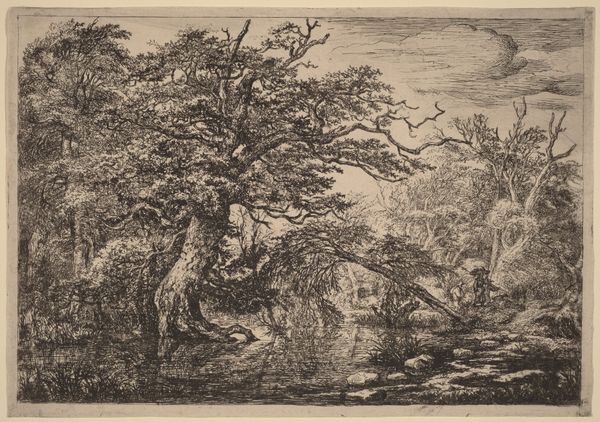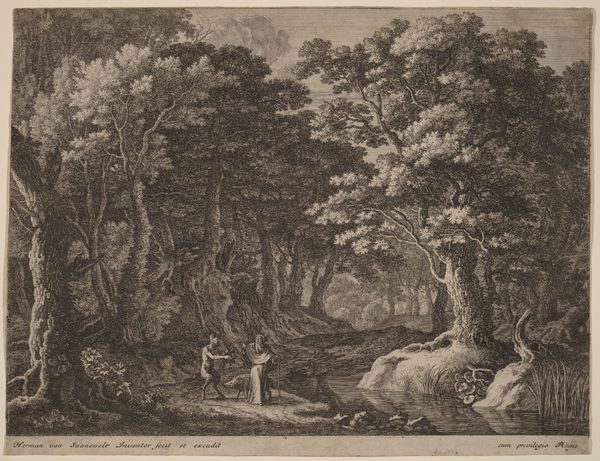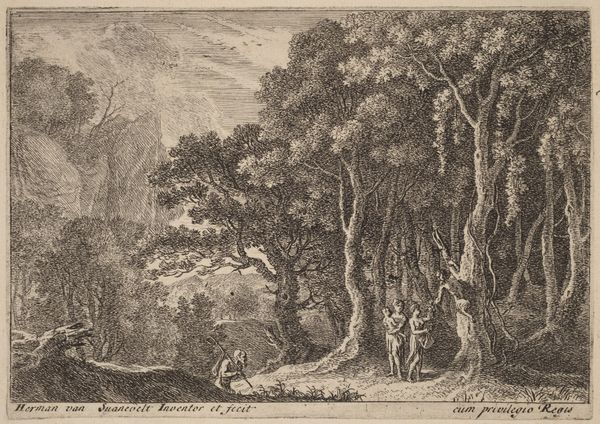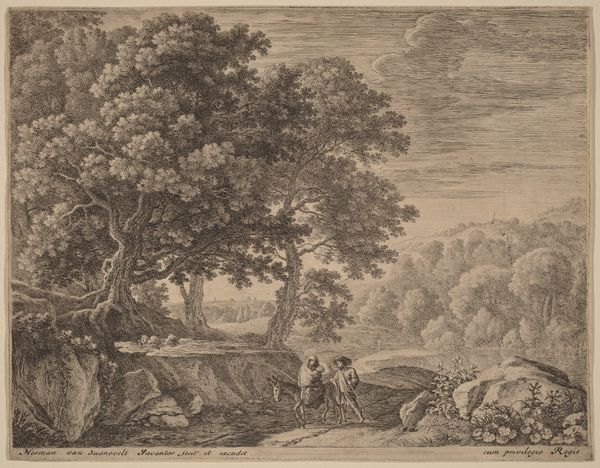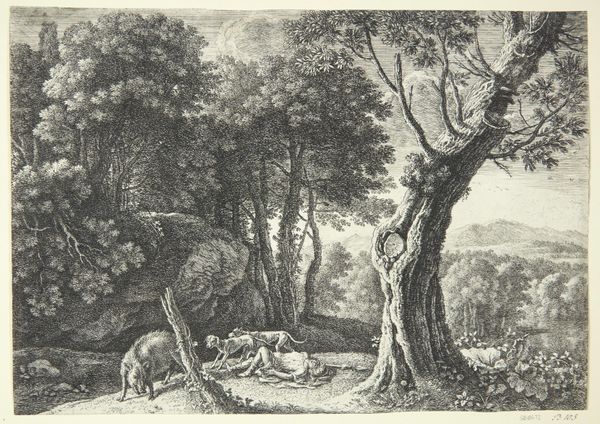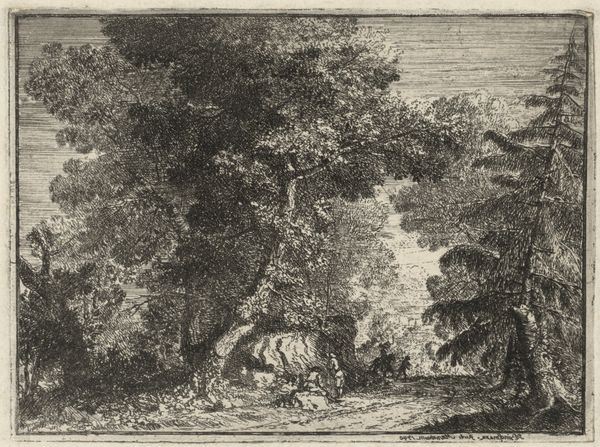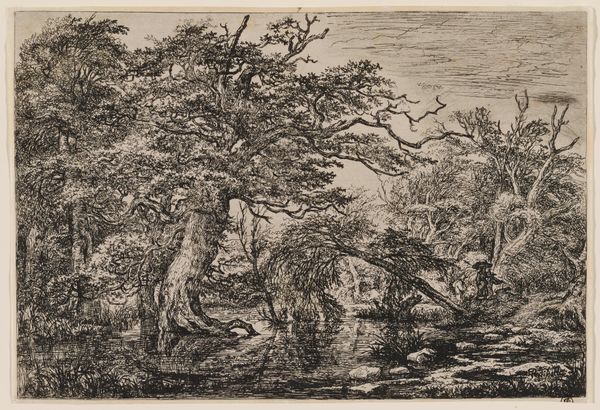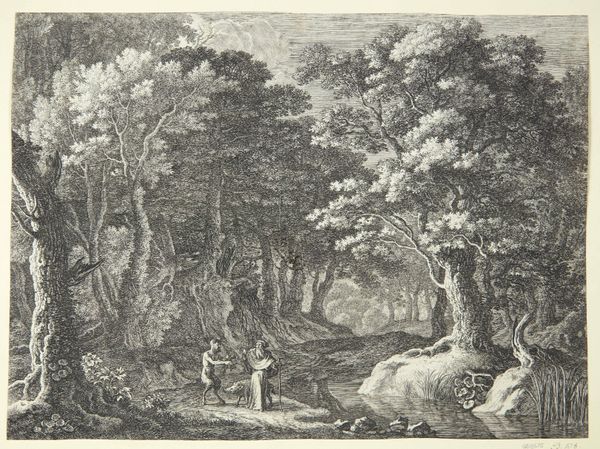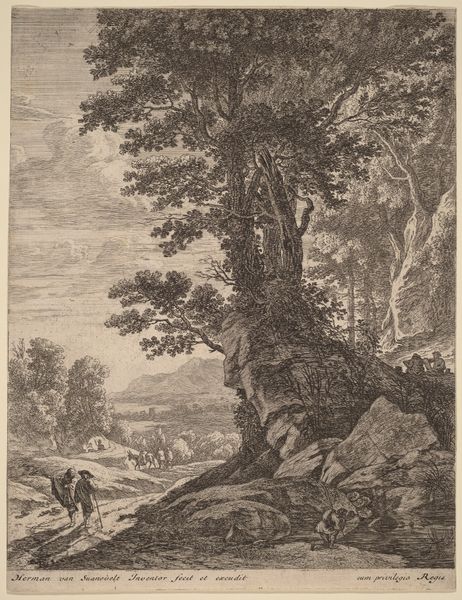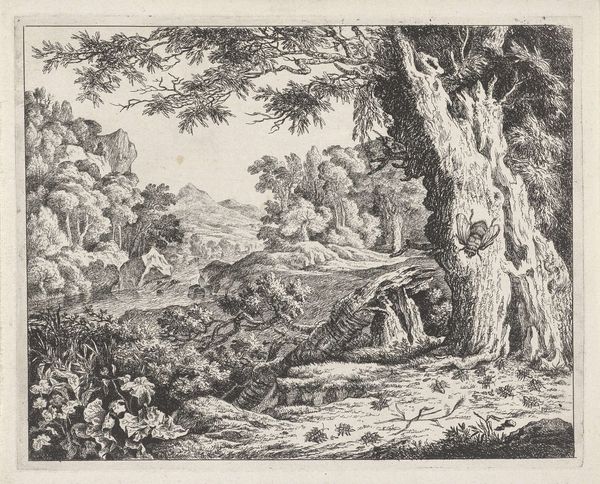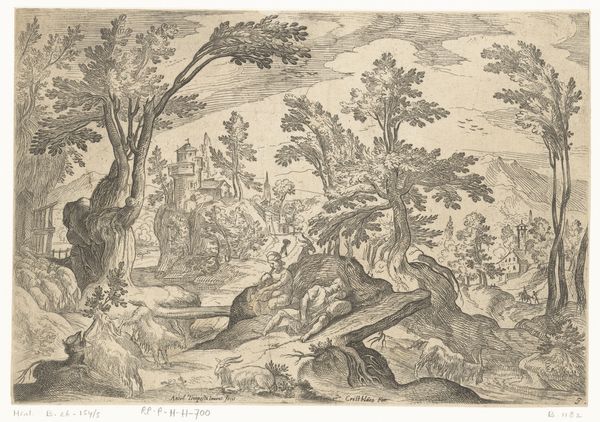
print, engraving
#
ink painting
#
neoclassicism
# print
#
landscape
#
history-painting
#
engraving
Dimensions: sheet: 28.1 × 35.9 cm (11 1/16 × 14 1/8 in.) (trimmed to plate mark)
Copyright: National Gallery of Art: CC0 1.0
Curator: Look at this intricate print, "Arcadian Landscape with a Satyr Family," by Carl Wilhelm Kolbe. It dates to between 1759 and 1835 and employs engraving techniques to bring to life a mythic landscape. What's your immediate take on it? Editor: I'm struck by the sheer amount of work, of material transformation, needed to create this. It seems the process is really time consuming and meticulous given the details. And this neoclassical idealism, the leisure and celebration in this 'arcadia' is striking given the working class and labor systems happening concurrently. Curator: Precisely. Think about Kolbe’s social location when looking at this idyllic scene; consider what he’s reflecting through the lens of class, societal change, and also the longing gaze to an invented Greek and Roman golden age, which for so many eras have symbolized an escape from more crude realities. It's rife with that kind of symbolism and idealism. The satyr family itself, symbols of lust and nature, are neatly incorporated. Editor: Right. And it’s through this reproducible medium that such elitist views about a 'perfect' existence, as he creates this very idyllic Arcadian scene, get distributed to the broader public. It's quite potent when one thinks of the socio-economic background it serves, not to mention the materials required: paper, ink, the labor of engraving... it speaks of a particular class perspective. Curator: Definitely. Note how Kolbe integrates classical architectural ruins almost as if staging elements, and how that sets the stage for this notion of ideal civilization—also reflected in those mythological figures, living in what’s purported as perfect harmony with nature. Now I want to highlight the rendering. Notice the quality, texture and shading of the trees... what an incredible process it must have been to carve these small detailed details of leaves... Editor: Absolutely, it’s mesmerizing to ponder how this was carved from a flat piece of metal. How the choices about line density affect depth perception; I mean the sheer physicality of labor is so apparent and affects the social and political implications. It causes one to consider: whose hands created it and whose benefit did this idyll serve? Curator: You are right, and the questions you posit, rooted in tangible reality, juxtapose starkly to Kolbe's landscape of ideal nature. Thank you for taking us from process to larger social critiques. Editor: Thank you! Examining these methods opens dialogues about material and its ability to shape ideologies; this work truly represents a perfect place to discuss the politics of making.
Comments
No comments
Be the first to comment and join the conversation on the ultimate creative platform.
